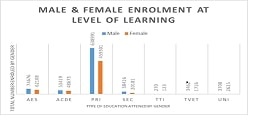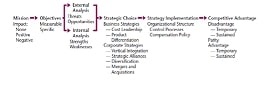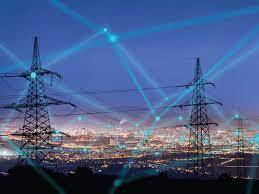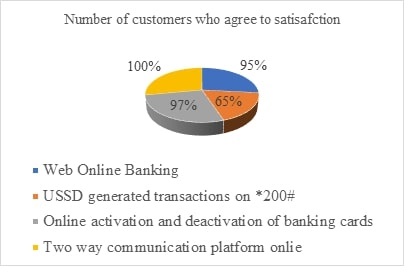References:
[1] IEA., 2021, Executive
summary – world energy outlook 2021 – analysis. IEA. Retrieved April 3, 2023, from
https://www.iea.org/reports/world-energy-outlook-2021/executive-summary
[2] Nikoletatos, J.,
& Tselepis, S., 2015, Renewable Energy Integration in power grids. International
Renewable Energy Agency. Retrieved April 19, 2023, from https://www.irena.org/-/media/Files/IRENA/Agency/Publication/2015/IRENA-ETSAP_Tech_Brief_Power_Grid_Integration_2015.pdf
[3] Mertzanis, C., 2019,
Financialization, institutions and financing constraints in developing countries.
Cambridge Journal of Economics, 43(4), 825–866. https://doi.org/10.1093/cje/bez015
[4] Zsiborács, H., Baranyai,
N. H., Vincze, A., Zentkó, L., Birkner, Z., Máté, K., & Pintér, G., 2019, Intermittent
renewable energy sources: The role of Energy Storage in the European Power System
of 2040. Electronics, 8(7), 729. https://doi.org/10.3390/electronics8070729
[5] Trainer, T., 2017,
Some problems in storing renewable energy. Energy Policy, 110, 386–393. https://doi.org/10.1016/j.enpol.2017.07.061
[6] Polzin, F., Migendt,
M., TTube, F. A., & von Flotow, P., 2014, Public policy influence on renewable
energy investments a longitudinal study across OECD countries. SSRN Electronic
Journal. https://doi.org/10.2139/ssrn.2423310
[7] Sovacool, B. K.,
Bergman, N., Hopkins, D., Jenkins, K. E. H., Hielscher, S., Goldthau, A., &
Brossmann, B., 2020, Imagining sustainable energy and mobility transitions: Valence,
temporality, and radicalism in 38 visions of a low-carbon future. Social Studies
of Science, 50(4), 642–679. https://doi.org/10.1177/0306312720915283
[8] Maradin, D., 2021,
Advantages and disadvantages of renewable energy sources utilization. International
Journal of Energy Economics and Policy, 11(3), 176–183. https://doi.org/10.32479/ijeep.11027
[9] Khambalkar, V. P.,
Katkhede, S. S., Dahatonde, S., Korpe, N. D., & Nage, S. M., 2010, Renewable
energy: An assessment of public awareness. International Journal of Ambient Energy,
31(3), 133–142. https://doi.org/10.1080/01430750.2010.9675112
[10] Bhattarai, U., Maraseni,
T., & Apan, A., 2022, Assay of renewable energy transition: A systematic literature
review. Science of The Total Environment, 833, 155159. https://doi.org/10.1016/j.scitotenv.2022.155159
[11] Broom, D., 2021,
February 17, This artificial island Will Power 3 million European households. World
Economic Forum. Retrieved April 24, 2023, from https://www.weforum.org/agenda/2021/02/denmark-history-making-offshore-wind-energy-hub/
[12] Hohmeyer, O. H.,
& Bohm, S., 2014, Trends toward 100% renewable electricity supply in Germany
and Europe: A paradigm shift in energy policies. WIREs Energy and Environment, 4(1),
74–97. https://doi.org/10.1002/wene.128
[13] Painuly, J. P., &
Wohlgemuth, N., 2022, Renewable Energy Technologies: Barriers and policy implications.
Innovative Renewable Energy, 517–522. https://doi.org/10.1007/978-3-030-76221-6_60
[14] Siew, R., 2023, Stakeholder
engagement. Sustainability Analytics Toolkit for Practitioners, 129–150. https://doi.org/10.1007/978-981-19-8237-8_8
[15] Rae, C., Kerr, S.,
& Maroto-Valer, M. M., 2020, Upscaling Smart Local Energy Systems: A review
of technical barriers. Renewable and Sustainable Energy Reviews, 131, 110020.
https://doi.org/10.1016/j.rser.2020.110020
[16] Ud Din, S., Wimalasiri,
R., Ehsan, M., Liang, X., Ning, F., Guo, D., Manzoor, Z., Abu-Alam, T., & Abioui,
M., 2023, Assessing public perception and willingness to pay for renewable energy
in Pakistan through the theory of planned behavior. Frontiers in Energy Research,
11. https://doi.org/10.3389/fenrg.2023.1088297
[17] Johansen, K., 2021,
Blowing in the wind: A brief history of wind energy and wind power technologies
in Denmark. Energy Policy, 152, 112139. https://doi.org/10.1016/j.enpol.2021.112139
[18] Maegaard, P., Krenz,
A., & Palz, W., 2014, Wind power for the world: The rise of modern wind energy.
Pan Stanford Publishing Pte. Ltd.
[19] Hvelplund, F., &
Djørup, S., 2017, Multilevel policies for radical transition: Governance for a 100%
renewable energy system. Environment and Planning C: Politics and Space, 35(7),
1218–1241. https://doi.org/10.1177/2399654417710024
[20] Egging, R., &
Tomasgard, A., 2018, Norway's role in the European Energy Transition. Energy Strategy
Reviews, 20, 99–101. https://doi.org/10.1016/j.esr.2018.02.004
[21] Graabak, I., Korpås,
M., Jaehnert, S., & Belsnes, M., 2019, Balancing future variable wind and solar
power production in central-West Europe with Norwegian hydropower. Energy, 168,
870–882. https://doi.org/10.1016/j.energy.2018.11.068
[22] Wolfgang, O., Haugstad,
A., Mo, B., Gjelsvik, A., Wangensteen, I., & Doorman, G., 2009, Hydro Reservoir
Handling in Norway before and after deregulation. Energy, 34(10), 1642–1651.
https://doi.org/10.1016/j.energy.2009.07.025
[23] Kamran, M., 2018,
Current status and future success of renewable energy in Pakistan. Renewable
and Sustainable Energy Reviews, 82, 609–617. https://doi.org/10.1016/j.rser.2017.09.049
[24] Ahmed, S., Mahmood,
A., Hasan, A., Sidhu, G. A., & Butt, M. F., 2016, A comparative review of China,
India and Pakistan renewable energy sectors and sharing opportunities. Renewable
and Sustainable Energy Reviews, 57, 216–225. https://doi.org/10.1016/j.rser.2015.12.191
[25] Zafar, U., Ur Rashid,
T., Khosa, A. A., Khalil, M. S., & Rashid, M., 2018, An overview of implemented
renewable energy policy of Pakistan. Renewable and Sustainable Energy Reviews,
82, 654–665. https://doi.org/10.1016/j.rser.2017.09.034
[26] Pickett, S. T., Burch
Jr., W. R., Dalton, S. E., Foresman, T. W., Grove, J. M., & Rowntree, R., 1997,
Urban Ecosystems, 1(4), 185–199. https://doi.org/10.1023/a:1018531712889
[27] IMF., 2019, March
7, Guyana, and the IMF. IMF. https://www.imf.org/en/Countries/GUY
[28] OilNOW (2023, April
24). Local content proving itself as tool to combat Dutch disease in Guyana. https://oilnow.gy/featured/oil-sector-local-content-accounted-for-5-of-guyanas-gdp-in-2022/

 Analysing Barriers to Girls’ Education Outcomes in South SudanAuthor: Shadrach MaperDOI: 10.21522/TIJMG.2015.10.01.Art001
Analysing Barriers to Girls’ Education Outcomes in South SudanAuthor: Shadrach MaperDOI: 10.21522/TIJMG.2015.10.01.Art001 Mining Sector in South Africa: An Individual Perception on Open StrategyAuthor: Robert Ward GrayDOI: 10.21522/TIJMG.2015.10.01.Art002
Mining Sector in South Africa: An Individual Perception on Open StrategyAuthor: Robert Ward GrayDOI: 10.21522/TIJMG.2015.10.01.Art002 Primary Business Value System and Disclosures Paradigm Shift: A Literature ReviewAuthor: Lindunda WamunyimaDOI: 10.21522/TIJMG.2015.10.01.Art003
Primary Business Value System and Disclosures Paradigm Shift: A Literature ReviewAuthor: Lindunda WamunyimaDOI: 10.21522/TIJMG.2015.10.01.Art003 Barriers To Implementation of Quality Management Systems (Qms), of Accredited Public Health Laboratories, In BotswanaAuthor: Bakae MoitlhobogiDOI: 10.21522/TIJMG.2015.10.01.Art004
Barriers To Implementation of Quality Management Systems (Qms), of Accredited Public Health Laboratories, In BotswanaAuthor: Bakae MoitlhobogiDOI: 10.21522/TIJMG.2015.10.01.Art004 Assessment of the Impact of Financial Intermediation on Gross Domestic Product in Nigeria from 1996 to 2022Author: Abolade Isaac AGBOLADOI: 10.21522/TIJMG.2015.10.01.Art005
Assessment of the Impact of Financial Intermediation on Gross Domestic Product in Nigeria from 1996 to 2022Author: Abolade Isaac AGBOLADOI: 10.21522/TIJMG.2015.10.01.Art005 Change Management In the Energy Sector In Guyana: A Shift From Fossil To Renewable Energy MixAuthor: Vivian LamDOI: 10.21522/TIJMG.2015.10.01.Art006
Change Management In the Energy Sector In Guyana: A Shift From Fossil To Renewable Energy MixAuthor: Vivian LamDOI: 10.21522/TIJMG.2015.10.01.Art006 Corona Virus-19 Crisis Management: Factors Essential to Africa’s Success in Managing the Corona VirusAuthor: Silwayiphi Samson SitholeDOI: 10.21522/TIJMG.2015.10.01.Art007
Corona Virus-19 Crisis Management: Factors Essential to Africa’s Success in Managing the Corona VirusAuthor: Silwayiphi Samson SitholeDOI: 10.21522/TIJMG.2015.10.01.Art007 Impacts Of Strategic Partnership On Technological Transformation On Manufacturing FirmsAuthor: Abdulhadi Saleh R. AlmarriDOI: 10.21522/TIJMG.2015.10.01.Art008
Impacts Of Strategic Partnership On Technological Transformation On Manufacturing FirmsAuthor: Abdulhadi Saleh R. AlmarriDOI: 10.21522/TIJMG.2015.10.01.Art008 Digital Transformation and Customer Satisfaction: Lessons from Standard Chartered Bank of ZimbabweAuthor: Sham HokonyaDOI: 10.21522/TIJMG.2015.10.01.Art009
Digital Transformation and Customer Satisfaction: Lessons from Standard Chartered Bank of ZimbabweAuthor: Sham HokonyaDOI: 10.21522/TIJMG.2015.10.01.Art009 Agribusiness Risk Management in Nigeria - A Conceptual AnalysisAuthor: Abolade Isaac AGBOLADOI: 10.21522/TIJMG.2015.10.01.Art010
Agribusiness Risk Management in Nigeria - A Conceptual AnalysisAuthor: Abolade Isaac AGBOLADOI: 10.21522/TIJMG.2015.10.01.Art010 Artificial Intelligence and Customer Experience: Key Takeouts From Telecoms Sector in ZimbabweAuthor: Sham HokonyaDOI: 10.21522/TIJMG.2015.10.01.Art011
Artificial Intelligence and Customer Experience: Key Takeouts From Telecoms Sector in ZimbabweAuthor: Sham HokonyaDOI: 10.21522/TIJMG.2015.10.01.Art011
